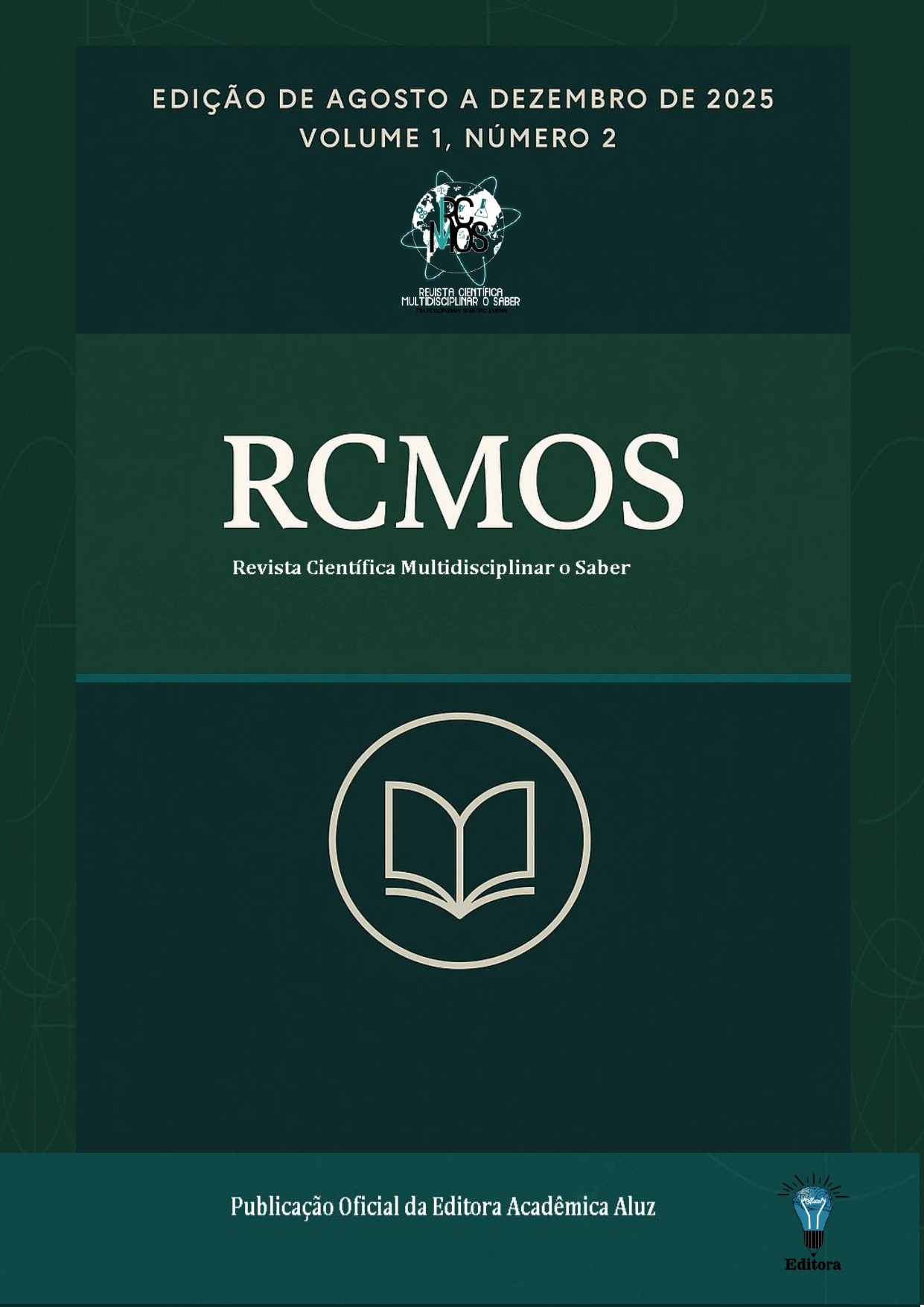Patient safety in interhospital transportation: an integrative review
Patient safety in interhospital transportation: an integrative review
DOI:
https://doi.org/10.51473/rcmos.v1i2.2025.1165Keywords:
Urgency. Emergency. Patient transport. Nursing.Abstract
Interhospital transport is essential to ensure comprehensive and continuous care in cases where the originating unit lacks the necessary resources. During the transfer of critically ill patients, risks increase significantly, with a greater chance of clinical instability, whether due to the characteristics of transport or process failures. Therefore, this study aimed to analyze the evidence in the literature on patient safety in urgent and emergency situations during interhospital transport, with an emphasis on the implications for the nursing team. An integrative literature review was chosen due to the need to gather scientific evidence to support safe and effective practices and improve care during patient transport. The data sources reviewed were LILACS, BDENF, and MEDLINE, including publications from 2015 to 2025. The RIL comprised three articles that demonstrated that promoting critical patient safety during interhospital transport is conditioned by the synergy between structural, organizational, and clinical factors, and especially the level of qualification of the healthcare team. The main complications reported include communication failures, inadequate medical equipment, and failures in care procedures, especially those related to the nursing team's knowledge deficit. This review highlights the need for investment in continuing education and measures such as standardizing procedures through validated protocols for interhospital transport and strengthening an organizational culture focused on patient safety.
Downloads
References
ALVES, F. J. Dificuldades percepcionadas pelos enfermeiros durante o transporte do doente crítico. Relatório de estágio (Licenciatura em Enfermagem) – Escola Superior de Saúde, Instituto Politécnico de Bragança, 2021. Disponível em: <https://bibliotecadigital.ipb.pt/handle/10198/24819>. Acesso em: 10 jul. 2025.
ANDRADE, A. M. et al. Evolução do Programa Nacional de Segurança do Paciente: uma análise dos dados públicos disponibilizados pela Agência Nacional de Vigilância Sanitária. Vigilância Sanitária em Debate: Sociedade, Ciência & Tecnologia, v. 8, n. 4, p. 37-46, 2020. Disponível em: <https://www.redalyc.org/articulo.oa?id=570567431005>. Acesso em: 10 jul. 2025. DOI: https://doi.org/10.22239/2317-269x.01505
BOMFATI, M. et al. Transporte intra/extra-hospitalar de crianças: implicações da equipe de Enfermagem. Espaço para a Saúde - Revista de Saúde Pública do Paraná, v. 20, n. 1, p. 40–47, 2019. DOI: https://doi.org/10.22421/15177130-2019v20n1p40
BORGES, B.; CORREIA, T.; MARTINS, M. Intercorrências no transporte inter-hospitalar da pessoa em situação crítica. Servir, [S. l.], v. 2, n. 04, 2023. Disponível em: <https://revistas.rcaap.pt/servir/article/view/28388> . Acesso em: 17 jul. 2025.
Conselho Federal de Enfermagem (COFEN). Resolução nº 564/2017. Aprova o Código de Ética dos Profissionais de Enfermagem. Brasília: COFEN, 2017. Disponível em: https://www.cofen.gov.br/resolucao-cofen-5642017_59145.html. Acesso em: 16 jul. 2025.
BRASIL. Ministério da Saúde. Resolução RDC nº 36, de 25 de julho de 2013. Institui ações para a segurança do paciente em serviços de saúde e dá outras providências. Diário Oficial da União: seção 1, Brasília, 2013.
BRASIL. Ministério da Saúde. Documento de referência para o Programa Nacional de Segurança do Paciente / Ministério da Saúde; Fundação Oswaldo Cruz; Agência Nacional de Vigilância Sanitária. Brasília: Ministério da Saúde, 2014.
BRASIL. Ministério da Saúde. Portaria nº 2.048, de 5 de novembro de 2002. Aprova o regulamento técnico dos sistemas estaduais de urgência e emergência. Diário Oficial da União: Brasília, 2002.
BRASIL. Ministério da Saúde. Portaria nº 529, de 1º de abril de 2013. Institui o Programa Nacional de Segurança do Paciente (PNSP). Diário Oficial da União: Brasília, 2013.
CARBONI, R. M.; REPPETTO, M. A.; NOGUEIRA, V. O. Erros no exercício da enfermagem que caracterizam imperícia, imprudência e negligência: uma revisão bibliográfica. Revista Paulista de Enfermagem, São Paulo, v. 29, n. 1-2-3, p. 100-107, 2018.
CARVALHO, C.; COSTEIRA, C. R. B.; PEREIRA SOUSA, J. Nursing Care at Critical Care Patient Inter-Hospital Transfer: The Construction of a Checklist through a Scoping Review. Emergency Care and Medicine, v. 1, n. 3, p. 221–229, 2024. DOI: https://doi.org/10.3390/ecm1030023
CARVALHO, M. C. da; BASTO, J. B.; COSTA, J. N. da et al. Transferência inter-hospitalar de pacientes críticos: atenção da equipe de Unidade de Suporte Avançado (USA) de vida terrestre. Revista FT, v. 38, ed. 132, 2024. Disponível em: <https://revistaft.com.br/transferencia-inter-hospitalar-de-pacientes-criticos-atencao-da-equipe-de-unidade-de-suporte-avancado-usa-de-vida-terrestre/>. Acesso em: 11 jul. 2025.
DOS SANTOS, M.; CAMILOTTI, Y. J.; ZAREMBSKI, F. C..; TRENTIN GUARDA, C. V. ; ANTONELLO, . J. O transporte inter-hospitalar do paciente em estado grave: Uma revisão narrativa. Santé - Cadernos de Ciências da Saúde, [S. l.], v. 3, n. 1, p. 48–66, 2024. Disponível em: <https://periodicos.unidep.edu.br/sante/article/view/286>. Acesso em: 11 jul. 2025.
EHRENTRAUT, S. et al. Interprofessional two-man team approach for interhospital transport of ARDS-patients under extracorporeal membrane oxygenation: a 10 years retrospective observational cohort study. BMC Anesthesiology, v. 19, n. 1, 2019. DOI: https://doi.org/10.1186/s12871-019-0687-9
FERNANDES, E.; INFANTE, J.; MOTA, M.; RIBEIRO, O. Nursing care during inter-hospital transport of the critically ill patient: scoping review. Millenium – Journal of Education, Technologies, and Health, v. 2, n. 10, p. 151–167, 2022. Disponível em: <https://www.researchgate.net/publication/362367061_Assistencia_de_enfermagem_durante_o_transporte_inter-hospitalar_do_doente_em_estado_critico_revisao_scoping>. Acesso em: 11 jul. 2025.
GALVÃO, T. F.; PANSANI, T. DE S. A.; HARRAD, D.. Principais itens para relatar Revisões sistemáticas e Meta-análises: A recomendação PRISMA. Epidemiologia e Serviços de Saúde, v. 24, n. 2, p. 335–342, 2015. DOI: https://doi.org/10.5123/S1679-49742015000200017
GARAVAZZO, Tabata Luna; MATSUNO, Alessandra Kimie; CARMONA, Fabio; CARLOTTI, Ana Panzeri; MIRANDA, Carlos Henrique. Impacto prognóstico das complicações ocorridas durante o transporte de crianças gravemente doentes. Scientia Medica, [S. l.], v. 30, n. 1, p. e34725, 2020. Disponível em: https://revistaseletronicas.pucrs.br/scientiamedica/article/view/34725. Acesso em: 19 jul. 2025. DOI: https://doi.org/10.15448/1980-6108.2020.1.34725
GRAÇA, A. C. G. da et al. Transporte inter-hospitalar do doente crítico: a realidade de um hospital do nordeste de Portugal. Revista de Enfermagem Referência, v. 4, n. 15, 2017. Disponível em: <https://www.redalyc.org/articulo.oa?id=388255693017> . Acesso em: 11 jul. 2025.
INSTITUTE OF MEDICINE. Committee on Quality of Health Care in America. To err is human: building a safer health system. KOHN, L. T.; CORRIGAN, J. M.; DONALDSON, M. S. (Ed.). Washington, D.C.: National Academies Press, 2000.
LOPES, B. DE A. et al. A CULTURA DE SEGURANÇA DO PACIENTE NA PERSPECTIVA DA EQUIPE DE ENFERMAGEM. Cogitare Enfermagem, v. 28, 2023. DOI: https://doi.org/10.1590/ce.v28i0.91375
MELO, S. C. et al. Transporte de pacientes intra e inter-hospitalar. Belo Horizonte: Fundação Hospitalar do Estado de Minas Gerais, 2019. Disponível em: <https://www.fhemig.mg.gov.br/files/1394/Protocolos-Clinicos/14439/PC-58---Transportes-de-pacientes-intra-e-inter-hospitalar-(2019).pdf>. Acesso em: 09 jul. 2025.
MOREIRA, L. R. (org.). Manual de revisão bibliográfica sistemática integrativa: a pesquisa baseada em evidências. Belo Horizonte: Ânima Educação, 2014. Disponível em: <https://biblioteca.cofen.gov.br/wp-content/uploads/2019/06/manual_revisao_bibliografica-sistematica-integrativa.pdf>. Acesso em: 11 jul. 2025.
MURATA, M.; NAKAGAWA, N.; KAWASAKI, T.; et al. Adverse events during intrahospital transport of critically ill patients: a systematic review and meta-analysis. American Journal of Emergency Medicine, v. 52, p. 13–19, 2022. Disponível: <https://doi.org/10.1016/j.ajem.2021.11.021> . Acesso em: 15 jul. 2025. DOI: https://doi.org/10.1016/j.ajem.2021.11.021
OLIVEIRA, M. V. DE. Educação contínua - um componente essencial para a excelência da assistência do enfermeiro na emergência: Revisão narrativa. Research, Society and Development, v. 14, n. 4, p. e0914448503, 4 abr. 2025. DOI: https://doi.org/10.33448/rsd-v14i4.48503
ORGANIZAÇÃO MUNDIAL DA SAÚDE. Ação global pela segurança do paciente. 72ª Assembleia Mundial da Saúde, Resolução WHA72.6, Genebra, 2019. Disponível em: <https://apps.who.int/gb/ebwha/pdf_files/WHA72/A72_R6-en.pdf>. Acesso em: 11 jul. 2025.
PIMENTA, P. C. DE O.; ALVES, V. H. O TRANSPORTE INTER-HOSPITALAR DO RECÉM-NASCIDO DE ALTO RISCO: UM DESAFIO PARA A ENFERMAGEM
Downloads
Additional Files
Published
Issue
Section
Categories
License
Copyright (c) 2025 Franklin Jaime Quiroz Damas, Samilly Malcher de Castro, Dhonleno Gomes dos Santos, Elliza Emily Perrone Barbosa, Victor da Silva Almeida (Autor)

This work is licensed under a Creative Commons Attribution 4.0 International License.












